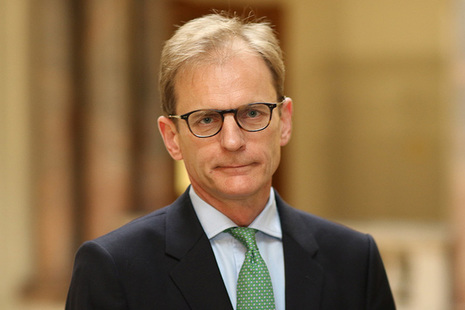
Ambassador Tom Dodd introduced the topic of Human Rights and Diplomacy with his insights, views and experience at Finnbrit on the 19th of November 2020.
Having first set the basis for the discussion by defining both human rights and diplomacy, the Ambassador introduced us to the legal and statutory basis of human rights around the globe, since the first document of rights – the Magna Carta, in 1215. Over time, human rights have changed and continue to change. They have been documented for example in Habeas Corpus, the Bill of Rights in the 17th century, in the US declaration of Independence and the French Declaration of Rights of Man. The International Humanitarian Law was developed in the 19th century. The Declaration of Human Rights was given in 1948, influenced by the events of World War II.
Human rights are inherent to all human beings, regardless of race, sex, nationality, ethnicity, language, religion or any other status. European Convention on Human Rights (ECHR) defines human rights to include the right to life and liberty, freedom from slavery and torture, freedom of opinion and expression, the right to work and education, and many more.
The Ambassador then talked about some challenging areas in human rights. For example, there are many laws on the topic and not everyone has signed up to them or the laws and agreements have not been ratified – human rights are a true patchwork! There are also challenges in the enforcement of rights. We can interpret the current situation such that for example gender equality rights in most countries have a good record of success. However, there is still an amount of work to do, for example in domestic violence and racial discrimination. In addition to the puzzle of various laws and agreements and enforcement, there are also challenges in perceived deliberate breaching of rights. Recent examples include actions in Hong Kong, Belarus, and those in China against Uighurs. Perhaps the fourth challenge is how to keep up with all this as the concept of rights is ever changing!
The Ambassador described ways and means of improving human rights via diplomacy, for example: making new international conventions and setting customary precedents and encouraging sign up of international human rights instruments and ratification. One could also use the UPR (Universal Periodic Review) process, where a review of the human rights records is undertaken with an objective of improving the human rights situation. As a last resort, the human rights violations may be taken to international courts, such as the ICJ (International Court of Justice) and the ICC (International Criminal Court).
In conclusion: there is hope! Many parties are working to achieve better human rights all over the world, and many recent developments help raise the issues. For example, social media has opened up a channel for raising issues that might otherwise be difficult to raise. This is the case with the #metoo-movement that enabled women to speak up of the sexual harassment they had experienced. The continuation of this discussion is now changing the law on rape and blame in Finland. Another good example of activism is the one done by international businesses: Helsingin Sanomat (HS) ran a campaign on freedom of speech when the Presidents Donald Trump and Vladimir Putin visited Helsinki. HS placed billboards along the Presidents route from the airport to their hotel and from there to the summit and meeting venues. The key message of the billboards was “Welcome to the Land of Free Press”. The campaign was well noted in the international press, increasing discussion on an important topic across the world.
Another good way to effectively improve human rights is improving girls’ access to education globally. According to the United Nations, the education of girls is a unique positive force for development creating a positive spiral. Decades of research have shown education improves the lives of girls and women, leading to more equitable and enhanced economic development, stronger families, better services and better child health. This is also an area that the Ambassador endorses as one of the most important ways forward.
So, how does Finnbrit’s work fit into the picture? Finnbrit values lifelong learning, diversity and inclusiveness, all aspects of human rights. Finnbrit works at the “street level” striving to further human rights via its key offerings. The first of the three key offerings are the English language examination services (IELTS and Cambridge exams), that open doors to opportunities of further education or job advancement. Secondly, we offer English lessons that enable better collaboration, and help our students get their views across in important meetings and/or heard by global audiences. And thirdly, we offer social events such as the talk by the Ambassador. The events are held in English and achieve many aims, including adding to the richness of events in Helsinki for those who understand and speak English. This enables better integration to the Finnish society and enables our students to come and practice their English in a “live” environment and discuss views on diverse topics. Now that some of the events are also recorded and published on our Youtube channel, these benefits are also available across Finland and elsewhere.
Look out for the video of the talk and please connect to Finnbrit’s YouTube channel here.
